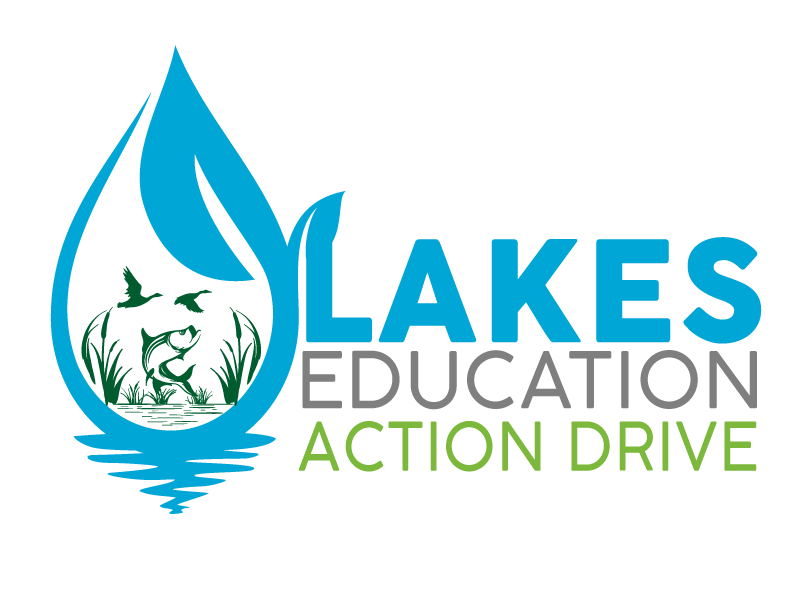January Podcast
Listen to January’s Podcast on upcoming State and Federal Legislation on Water. Or, read the transcript here.
Okay, 2020 was the year of COVID-19 resulting in 15 days to flatten the curve. Well, 15 days turned into all-year and shutting down business, locking loved ones in the home, and cancelling so many outdoor activities.
The Lakes Education Action Drive was not immune from this terrible disease. Our communications strategy had to change dramatically. Our board went to virtual meetings, so many activities were cancelled including our favorite, the Lakeland Cardboard Boat Challenge and Lakeshore Festival.
But we begin 2021 with the hope of a vaccine and getting back too normal. Well, here we are half-way through January and the upheaval in Washington D.C. and the continuation of COVID-19, once again, we really do not know what is going to be in store for us.
In this episode of LEAD’er, the Lakes Education Action Drive Podcast, I would like to review state and federal policy pertaining to water. Even though many of our businesses have shut and we remain on lockdown. State Legislators and lawmakers in D.C. will continue to make policy.
As a county with over 550 lakes, rivers, and streams it is important for us to keep up to date with water policy development.
In a letter from the American Water Works Association, they congratulate Joe Biden on winning the 2020 election. The state, “You will take office during a critical moment in U.S. history, and we are confident your commitment to research and science will serve you well.”
They explain to the President-elect how “the infrastructure their members maintain is the foundation on which the country’s communities are built.”
They developed a set of recommendations that will provide investments and attention needed to help address challenges the country faces in drinking water issues.
Due to COVID-19, the AWWA believes revenue shortfalls at U.S. drinking water utilities may reduce economic activity by $32.7 billion and cost 75,000 to 90,000 private-sector jobs.
Drinking water utilities will see revenues from customer payments drop by nearly $14 billion. This is the result of the elimination of water shutoffs for non-payment, increased late payments due to high unemployment, reductions in non-residential water demands, and the addition of fewer new customers due to economic stagnation.
Not so much here in Florida!
Many utilities, particularly those serving small to medium-sized communities, are at risk resulting from diminished operating revenues. Not only do these lost revenues mean local communities are less able to renew, repair, and sustain aging infrastructure and treatment facilities, but some are feeling the effects in their ongoing operating finances, which may result in the loss of operators that are needed to ensure the utility is in regulatory compliance.
It is critical to continue to provide water service to our communities during a pandemic. Consequently, water utilities themselves, or state or local governments across the country have instituted moratoria on disconnecting water service for non-payment during the COVID-19 crisis.
However, the AWWA has urged the President-Elect that if there is to be a mandatory moratorium on disconnecting water service, that such a moratorium be limited to the duration of the current coronavirus public health emergency plus a reasonable amount of time after the formal declaration expires.
Some past legislative proposals would have imposed a moratorium on shutoffs indefinitely, for any public health emergency. In addition, they imposed a moratorium if any part of a local government accepted relief funds, even if none went to the water utility.
It would be harmful for water utilities to be subject to such mandates if they have not received any benefits. Providing financial assistance to people who are struggling to pay their water utility bills is needed now more than ever.
The AWWA asks: As you work with Congress on the next COVID-19 relief package, we urge you to make sure it includes the following:
Funding to help low-income customers pay their water bills during the current pandemic emergency.
Funding to help those local water utilities that have suffered significant revenue losses due to the pandemic, so that they can continue to operate and provide safe water services; and
A definitive limitation to any mandated moratorium on disconnection of water service for non-payment if such as moratorium is included in a legislative package.
The Bureau of Economic Analysis (BEA) at the US Department of Commerce estimates that for every dollar spent on water infrastructure, $2.63 is generated in the private economy. And for every job added in the water workforce, the BEA estimates that 3.68 jobs are added in the national economy.
Their second request involved wastewater infrastructure:
In your 2021 budget, seek to fully authorize funding for State Revolving Funds.
Work with Congress to strengthen the effectiveness of the State Revolving Funds Program. And…
In negotiating changes to the tax code, ensure that the tax-exempt status of municipal bonds is protected, and that the tax advantages of advanced refunding of these bonds is restored.
Regarding America’s water-related workforce the AWWA has requested the following:
Work with the U.S. Environmental Protection Agency and the Associations of Boards of Certification to ease the ability of workers to carry their licenses to work at a water utility to other states.
Provide robust funding for community college scholarships that prepare students to entire the water workforce. And…
Direct the Department of Veterans Affairs to develop liaisons with the water sector job market. The water sector has prioritized hiring more veterans.
Citing the Agriculture Improvement Act of 2018, significant improvements in conservation programs that can be used to protect sources of drinking water. It enhanced the ability of agricultural producers and local water providers to collaborate on projects that help protect our source waters. Here are the key features:
Protection of drinking water sources as an explicit goal of the conservation title of the 2018 Farm Bill
An increase in incentives for agricultural producers to implement practices that benefit source water protection
Authorization for community water systems to work with state technical committees for agricultural programs to identify local priority areas for source water protection.
A dedication of at least 10 percent of funds in conservation programs going to projects that protect sources of drinking water, which could amount to $4 billion over 10 years
An increase in authorized funding for the Regional Conservation Partnership Program (RCPP) to $300 million a year, plus some streamlining of program administrative processes. The RCPP authorizes partnerships among agricultural producers, USDA, and non-agricultural entities, such as water utilities.
They followed this up by requesting the following:
We urge that in your 2021 budget proposal, you provide fully authorized funding for the conservation title of the farm bill. While these important provisions are provided mandatory funding through the farm bill, it is important for Congress to maintain that funding. Providing fully authorized funding to programs in the conservation title will not only help address algal blooms, nutrient overloading, and pesticide exposure in source waters, but also facilitate farmers and ranchers and community water systems working cooperatively on such projects.
Regarding research, the AWWA requested:
Work with Congress to see that future research is directed to further our understanding of the health effects, occurrences and treatment options for existing drinking water contaminants and emerging substances that may pose a risk to public health. Federal dollars can be greatly leveraged by funding research by extramural entities.
In the President’s budget request, increase funding for National Priorities Water Research and the Innovative Water Technologies grant programs to help better understand risks and treatment technologies for emerging contaminants; to recover resources, save energy and reduce greenhouse emissions from water treatment and other processes; and to enhance environmental protection across the water sector.
Finally, the AWWA states, new regulatory drinking water standards be a scientific, risk-based, and data-driven process that discerns what substances are to be regulated, and at what levels. This takes a significant amount of time, which can be at odds with perceived risk.
This is where the research efforts mentioned can accelerate and improve regulatory processes. The AWWA cautions against setting a precedent of by-passing these established processes via legislative action.
The nation tested that approach with the 1986 Amendments to the Safe Drinking Water Act with untoward results. Those amendments required that EPA to set 25 new regulations every 3 years. EPA’s former assistant administrator for water, said in a congressional House Subcommittee meeting on Health and Environment in 1996.
“The current requirement to regulate 25 new contaminants every three years needs to be replaced with a scientifically defensible, risk-based approach. The current regulatory treadmill dilutes limited resources on lower-priority contaminants, and consequently, may hinder more rapid progress on high priority contaminants.”
I concur, science-based regulation and not just throwing 25 new regulations into the system every 3 years is a must.
Thank you, American Water Works Association, for reaching out to the President-elect with sound advice and requests.
In Florida, the 2021 Legislative Session will begin soon with committee weeks and already our legislators are filling Bills.
In particular, “An act relating to public works projects would revise the definition of the term “public works project”; and prohibit the state or any political subdivision that contracts for a public works project from requiring specified acts by certain persons engaged in such project or prohibiting certain persons from receiving information about public works opportunities.
As used in this section, the term: “Public works project” means an activity of which 50 percent or more of the cost will be paid for with from state appropriated or locally-appropriated funds, or any combination thereof, that were appropriated at the time of the competitive solicitation and which consists of the construction, maintenance, repair, renovation, remodeling, or improvement of a building, road, street, sewer, storm drain, water system, site development, irrigation system, and reclamation projects
This Act may not require that a contractor, subcontractor, or material supplier or carrier engaged in such project:
Pay employees a predetermined amount of wages or prescribe any wage rate.
Provide employees a specified type, amount, or rate of employee benefits.
Control, limit, or expand staffing.
Recruit, train, or hire employees from a designated, restricted, or single source
Train employees in designated programs with restricted curriculum or from a single source.
I believe this is a good Bill and will loosen many of the restrictions on contractors. Often is the case, local governments will have different rules and restrictions on contractors. This results in confusion and many contractors refusing to even bid on certain contracts.
Another Act relating to reclaimed water will require certain domestic wastewater utilities to submit to the Department of Environmental Protection by a specified date a plan for eliminating nonbeneficial surface water discharge within a specified timeframe.
This Act will require the department to approve plans that meet certain requirements; requiring the department to make a determination regarding a plan within a specified timeframe and require utilities to implement approved plans by specified date.
This Act is designed to improve water quality and bring more funding for reclaim and alternative water sources.
Finally, the Florida Section of the American Water Works Association (FSAWWA) believes that water supply development plays in a critical role in meeting future water demands.
In Florida, state statutes recognize the challenge involved in ensuring that sufficient water be available for all existing and future reasonable-beneficial uses and that adverse effects of competition for water supplies be avoided.
To meet that challenge, the state defines these two distinct roles:
Water resource planning and development
Water supply development
The state’s five water management districts are charged with water resource planning and development. Local governments, regional water supply authorities, and government-owned and privately-owned water utilities are charged with water supply development.
Water supply development in Florida is defined as “the planning, design, construction, operation, and maintenance of public or private facilities for water collection, production, treatment, transmission, or distribution for sale, resale, or end use.”
Current approaches to supply development include:
Water conservation which offers an immediate, low-cost approach to meet increasing supply needs. Common goals for conservation programs include increasing water use efficiency, maximizing system capacity, and limiting increase financial impact to customers.
Demand-management strategies and technologies provides a range of opportunities – from conservation incentives, such as rebate programs, to water restrictions and rate incentive structures – to reduce water demand among residential and commercial users.
Water reuse/reclamation strategies and technologies include projects that treat water otherwise lost through discharge, evaporation, or run-off to near drinking water quality for irrigation, programs to treat and store water during regional rainy seasons for withdrawal and use during dry periods, and aquifer recharge projects.
And desalination strategies and technologies to offer the opportunity of harvesting and treating water from Florida’s coastal areas to increase available potable water supplies
Here at LE/AD, we believe this group understands it will take a combination of these technologies and approaches to meet future water demands and supports the efforts of communities throughout the state.
We support our 17 Municipalities, Polk County, and the Polk Regional Water Supply Cooperative in their effort to increase water supply, reduce waste, and improve water quality.
Lastly, while water conservation usually refers to water saved for the benefit of people, in the Kissimmee River Basin – site of the $800 million Kissimmee River Restoration Project, the Kissimmee River and Chain of Lakes Water Reservation will protect, or reserve, water needed for the protection of fish and wildlife.
Before the Kissimmee River was channelized in the 1960s, it meandered for 103 miles between Lake Kissimmee and Lake Okeechobee and contained diverse fish and wildlife resources and habitats associated with sand bars, vegetation beds, and variable flow conditions. The river overflowed its banks frequently and inundated the 1- to 2-mile-wide floodplain for extended periods of time, creating a mosaic of wetland plant communities.
Channelization converted the waterway into a 30-foot deep, 300 feet-wide canal that altered the hydrology of the system and eliminated its interaction with the habitat-rich floodplain. This altered hydrology had devastating impacts to fish, wildlife, and their habitats.
The Kissimmee River and Chain of Lakes form the headwaters of Lake Okeechobee and the Everglades. Together, these Central Florida water resources shelter 178 species of fish, wetland-dependent wading birds, amphibians, reptiles, and mammals.
The basin contains a nationally recognized largemouth bass fishery, nesting colonies of the endangered wood stork and snail kite, and one of the largest concentrations of nesting bald eagles in the United States.
The Kissimmee River Restoration Project restores over 40 square miles of river/floodplain ecosystem including 43 miles of meandering river channel and 27,000 acres of wetlands. The proposed water reservation rules for the Kissimmee River and Chain of Lakes will ensure the sustainability of this world class restoration project for future generations.
The Project is a partnership between the South Florida Water Management District and the U.S. Army Corps of Engineers to restore the river/floodplain ecosystem. As a kid, I remember going to my families trailer in Shady Oaks on Lake Kissimmee and my father telling me, channelizing the river is a bad idea.
Now, some 50 years later we are correcting what we thought was a good idea.
Well, thank you for listening to this episode! I along with the board of directors of LEAD would like to wish you a happy and prosperous 2021.
With the support of our members, volunteers, corporate sponsors like MOSAIC, AQUARIUS-SYSTEMS, and Tom Jennings Accounting along with our partners, City of Winter Haven, City of Lakeland, and Polk County we hope to be back in the community soon, providing water quality education to our visitors and residents.
For more information on LE/AD visit our website at www.lakeseducaiton.org and if you would like to make a suggestion for a future podcast email LE/AD at lakeseducation@hotmail.com








